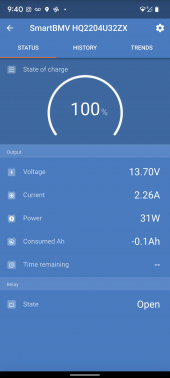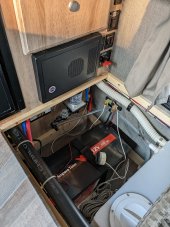I added a 300Ah lithium battery to our 21 Northstar 850sc camper and a BMV-712 Victron battery monitor. I hooked up the truck to the 7way connector, revved it up, and as suspected saw very little current coming in via the bluetooth app as suspected.
Next step is to install the Renogy DC-DC with MPPT charger. Space is very limited so I'm planning to build a 13x20 wood shelf over the battery to accommodate the charger and maybe an inverter in the future. On this model there is no vent and hole for the battery so I'm thinking I can run the truck cables through the cable tv inlet (not ever planning on using it) and put an Anderson connector here for quick disconnect.
The solar part seems pretty straightforward. Planning on mounting two Renogy Flexible Solar Panel 175 Watt in parallel and following the existing wire chase above the fridge. Will mount with this method for added airflow and removal if needed -
https://www.rvwithtito.com/articles/install-flexible-solar-panel-rv/
Any feedback appreciated.




